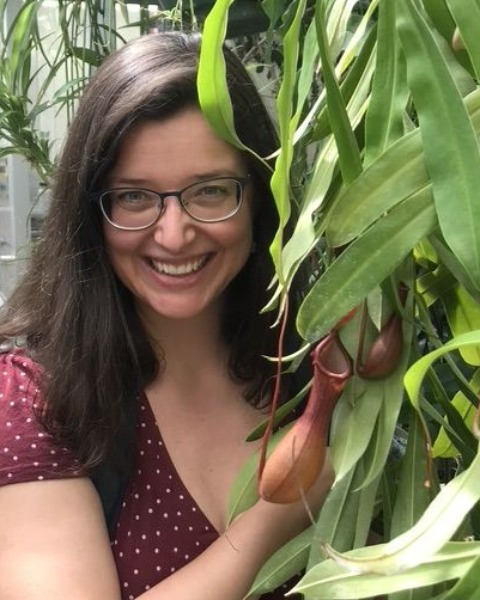Back
Contributed Talk
Session: : Communities: Traits And Functional Diversity 1
COS 146-6 - Microbial community function affect plant size and nutrients in a pitcher plant model system
Wednesday, August 9, 2023
9:15 AM - 9:30 AM PDT
Location: C120-121
- JB
Jessica R. Bernardin, n/a
Boise State University, Idaho, United States

Leonora S. Bittleston
Assistant Professor
Boise State University
Boise, Idaho, United States
Presenting Author(s)
Coauthor(s)
Abstract: Microbiomes often have strong effects on the health and fitness of their hosts. Furthermore, microbial communities perform vital ecosystem functions, such as cycling nutrients through biosynthesis and decomposition. We are just beginning to understand the direct effects of microbial community composition and function on plant traits like leaf nutrients or growth. Carnivorous pitcher plants offer an opportunity to test microbial community hypotheses in a tractable system. The modified leaves are pitcher-shaped and can host diverse microbial aquatic communities comprised of complex food webs. In this experiment, we inoculated sterile, freshly opened pitchers of Sarracenia purpurea with one of three functionally distinct bacterial communities. We hypothesized that differences in pitcher-associated bacterial community composition and function would impact host traits. These bacterial communities were originally isolated from wild pitcher plants, equilibrated to laboratory conditions in acidified cricket media, and previously characterized using physiological measurements and metagenomics. We collected weekly measurements of bacterial function (e.g., enzyme assays, respiration, and substrate use) and plant traits (e.g., morphometrics, photosynthesis, and leaf nutrient content), along with pitcher fluid samples that were frozen for future metagenomic and metatranscriptomic analyses. We observed distinct shifts in bacterial community composition and function over time. Our results showed that bacterial community function had a positive directional effect on plant size, with pitchers that hosted a particular bacterial community having higher biomass. Additionally, community hydrolytic enzyme activity also showed directional effects, with higher protease activity being positively correlated with leaf nitrogen content and chitinase activity showing the inverse relationship. We used Latent Dirichlet Allocation (LDA) with our metabarcoding data to identify mixed-membership clusters of taxa and observed distinct clusters across the starting communities and a new cluster that emerged and increased through time. Overall, we found that bacterial community composition and function in planta have measurable effects on leaf nutrient content and plant biomass. Continuing metagenomic and metatranscriptomic analysis will use functional potential and gene expression to better inform our understanding of plant-microbial relationships.
